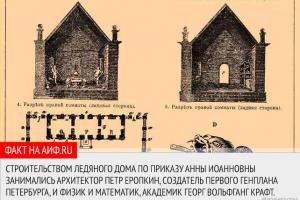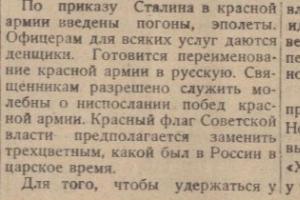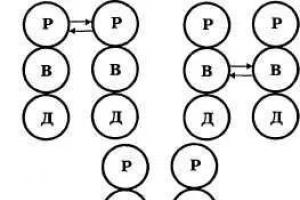Modernization of a metal-working milling machine will increase the technical potential and significantly expand its productive capabilities. One of possible options modernization consists of installing a mini-coordinate table on the milling machine. By using a jig table for the milling unit, the manufacturer can significantly reduce labor intensity.
Characteristic
The coordinate table device is an additional structure to the machine that allows you to move the part fixed on it along the required path. The installation can be used both for a milling unit and for a drilling unit. There are two types of coordinate table - industrial factory or small homemade.
The table can be set in motion using mechanical action manually, using electric drives or using computer control systems. When using numerical control, production is as automated as possible, and the processing accuracy of the part varies in the region of several micrometers.
Variety
In the factory version, the coordinate part installed on a milling or drilling machine includes:
- load-bearing support;
- control drives;
- part fixation system;
- automated control system.
Part fixation is divided into three types:
- vacuum;
- using the mass of the part itself;
- mechanical.

Coordinate structures have several different designs, but there are two main ones:
- portal;
- cross.
The cross pattern is used for processing volumetric parts, which is solved by using additional structures with three degrees of freedom. This means that the workpiece being processed has the ability to move along X, Y, and Z coordinates. In this design, the coordinate structure is installed on a milling machine.
The gantry scheme is a rotary table that is used to work with flat parts, in particular for drilling, with a rigidly fixed working body when movement along a vertical axis is necessary.
At enterprises producing large-sized products, long coordinate aluminum structures are installed. Thanks to this, the functionality of the machines used increases, because on the workbench it is possible to secure equipment, such as:
- special connector for tools;
- cooling drive;
- lubrication drive;
- neutralization of harmful gases and fumes;
- drive for removing dust and chips.
Features of the supporting structure
The design of coordinate settings for a milling machine and a machine differs in the material from which the supporting structure is made. If these are massive metal parts, then it is necessary to use a more rigid structure, which may consist of cast metal.
More rigid structures are still used to ensure the necessary clarity of movement of the working object on machines with, since the speed of movement of the workpiece in such production can reach several meters per second.
The material used for the manufacture of coordinate mounting pads is chosen as follows:
- steel;
- cast iron;
- aluminum alloys.
Structures consisting of aluminum alloys, are designed for light loads and are often used to equip drilling machines, where only vertical movement of the workpiece is implied.
The advantages of such a device are:
- manufacturability;
- budget;
- low weight of the structure.
Mechanisms for transmitting motion
Factory and homemade coordinate mini-platforms are set in motion mechanically. If production is associated with high-precision processes, then in such cases electric motors are used.
Types of gears for converting rotational motion into translational motion, as well as for moving a part relative to the working element, are divided according to the method of implementation.
They are divided into:
- gear;
- belt;
- screw.

Parameters that influence the selection of transmission type:
- the speed of movement of the platform with the workpiece fixed on its surface;
- electric motor power;
- processing accuracy.
The optimal option regarding the coefficient useful action and ensuring the accuracy of movement of the part, the ball screw drive has a number of other features:
- no jerking when moving;
- no noise;
- small backlash.
One of the disadvantages of this type of transmission is the inability to move the coordinate table at high speed. The second disadvantage is the high cost.

High cost is one of the disadvantages of this transmission
Additional options
It will be cheaper to use a belt drive, but as the cost decreases, the disadvantages also increase:
- increased wear;
- the need for frequent maintenance;
- high probability of belt breakage;
- low accuracy.
High accuracy and rapid movement of a part on a fixed platform can be achieved by using a gear drive, but in such a mechanism you need to be prepared for the appearance of backlash some time after the start of operation.
One of the best options for transmitting motion from a motor to a mini coordinate unit is the use of a direct drive, which consists of:
- linear motor;
- servo amplifier.

Servo amplifier
The advantage of these drives is that there is no need to use mechanical transmissions. This design allows you to directly transfer movement from the engine to the elements of the coordinate table.
The benefits also include increased speed and accuracy of part processing. Due to the fact that there are no auxiliary gears in the table circuit, the number of series-connected elements is reduced, and this, in turn, in better side affects the reliability of the coordinate installation.
conclusions
The error, which is at the level of several micrometers, is noticeably reduced in relation to other types of gears. Direct drive is characterized by high braking and acceleration rates.
Due to the fact that in a direct drive there are no parts that are subject to friction, the coordinate aluminum installation less subject to wear, which has a positive effect on its durability.
One of the few, but most significant disadvantages of direct drive is its price. The high cost of mass high-precision production is justified and paid off.
The Kuban Radical LLC company offers machines laser cutting OWN PRODUCTION with fiber optic source from 500W to 2000W
The machine is manufactured in one place - at the machine-tool plant named after. Sedina (Krasnodar)
The machines are designed to perform laser cutting of metals at speeds up to 20 m/min. The final processing speed depends not only on the power of the source but also on the power of the servos. If you want to use your machine to provide laser cutting services, then this machine will give you more opportunity to earn money than your competitors who have cheap machines with poor equipment. A high-performance machine will give a profit of 1.5 times or more per unit of time.
Why Kuban Radical:
A staff of highly qualified engineers ready to provide prompt technical support 24/7, 365 days a year. Constant support in Russian. Because we know that stopping production means serious losses.
We do laser cutting ourselves, so we know what you need for your task.
The price of the machine includes its manufacture and training of your specialist. You or your employee can always be present during the production and assembly of the machine.
Possibility to install additional option. We are manufacturers, which means that we can assemble the machine individually, according to specific tasks production.
Delivery throughout the Russian Federation, CIS, Europe. Possibility of delivery by our own vehicles, this is more reliable.
Machines available 500w 700w, 1000 w, 1500 w.
The average production time for a machine is 1.5 months
Possibility of payment AFTER production and testing by your specialists. This greatly simplifies obtaining a lease.
Equipment:
Servo drives and motors DELTA (Taiwan)
· Guides along Hiwin axes (Taiwan)
· Coordinate table with portal
Fiber laser source:
IPG (Russia, Fryazino)
Raycus (China) optional
Laser cutting head Raytools (Switzerland)
Industrial chiller chiller
Hood with volute and pipes
· Set of consumables
Specifications:
Desktop size: 1500*3000mm
Laser type: fiber laser
Machine manufacturer: Kuban Radical LLC
Laser Power: Optional
Laser wavelength: 1070 nm
X, Y axis guides: Hiwin 25
Z axis guides: Hiwin 20
X-axis transmission; Y: Rack/Helical Gear
X-axis motor; Y; Z: servo
Servo drives on X axes; Y: DELTA Electronics
Z-axis servo drive: DELTA Electronics
Z-axis height control system: capacitive non-contact
Control system: CypCut
Compatible with programs: AutoCAD, Compass, etc.
Machine operating format: drawing files with *.dxf extension,
Do you want a lower price?
Visit our production: Krasnodar, Zakharova str. 1
(Machine tool plant named after Sedin)
The efficiency and accuracy of part processing largely depends on the quality of the machine. A correctly selected mechanism is the key to product compliance with all specified standards and tolerances. Important role The coordinate table plays a role in maintaining drilling technology.
Concept and types
The table is a manipulator for fastening the workpiece being processed. Externally, it looks like a plate with the ability to fix the part using:
- mechanical method;
- vacuum method;
- own weight of the workpiece.
Products come with one, two and three degrees of freedom. This means that the feed is carried out along the coordinates X, Y, Z. For drilling flat parts, it is enough horizontal movements. With a voluminous product or a fixed drill, vertical movement of the table is necessary.
For large industrial drilling installations, long coordinate pads are manufactured. They are equipped with their own mounting frame. Both the part and the processing unit itself are mounted on such a device. The table for small machines is made with fastening to the device or to the surface of the workbench.
To set the table in motion, the design can be:
- mechanical;
- electrical;
The latter type is the most accurate, but the cost of such a device is significant.
Manufacturing of load-bearing elements
The materials for making the table frame are:
- cast iron;
- metal;
- aluminum.
The latter material is used for circuits with light loads and low torque forces. This option is acceptable when drilling wood or plastic.
pulled aluminum profile frame, mounted on threaded connections. Thus it turns out solid foundation. Advantages of the material:
- low weight;
- accessibility;
- ease of installation.
Many companies produce ready-made kits for assembling tables with your own hands.

Cast base structures are often cast iron. Their weight is significant, but the forces they can withstand are quite high. Such tables are used for large production volumes. Installation is carried out on the foundation, permanently.
The welded frame is the best option both for production facilities and for home use. The main thing is to reduce the welding stresses of the metal by releasing it when welding with your own hands. Otherwise, when the engine picks up speed, cracks may appear in the frame.
For drilling machines use two technological schemes table:
- cross;
- portal
The first is used for bulk workpieces. It makes it possible to carry out other manipulations on the fixed workpiece. With this arrangement, access to the part is provided from three sides.
The portal pattern is used when drilling flat products. It is easier to manufacture and has increased processing accuracy.
Selection of guides
From the right choice and fastening the movement guides of the table surface depends on the accuracy of processing. Rail and cylindrical elements are used. They are produced with a carriage superstructure and mounted bearing units.
The choice of table guide type depends on the type of drive. The part in question works to overcome the friction force. If high precision in movement is required, it is better to choose plain bearings. Rolling bearings reduce friction but create a lot of play.
Depending on the type of carriage, the guides are:
- with an enlarged flange, for fastening to the bottom of the table;
- Wafer type for conventional mounting to top threaded holes.
If you make it yourself, you can order rails with a stainless steel coating. They have an increased service life and longer abrasion resistance.
Types of gears for table movement
With small desktop machine The table is moved mechanically. But the greater the speed, accuracy and performance required, the more carefully the type of drive is selected. Electric motors are mainly used.
The essence of the unit’s operation is to convert the rotational work of the engine into translational motion of the table plane. There are three types of transmissions:
- rack and pinion;
- belt;
- ball screw.
The choice of node type is made based on:
- workpiece movement speed;
- machine engine power;
- required processing accuracy.
Machining accuracy at various transfer units
Advantages of Ball Screw:
- possibility of high-precision processing;
- small backlash;
- smooth movement of the table;
- quiet operation;
- ability to take heavy loads.

A significant disadvantage is the limited feed speed. The decrease in speed is especially noticeable when the propeller length is more than 1500 mm. Approximate speed calculation: for a 1 kW drive, the rotation speed is 3000 rpm. With a screw pitch of 10 mm, the transmission speed is 0.5 m/sec. In this case, 3 m will be covered in 6 seconds.
Another disadvantage is the high cost. You can reduce the cost of the project by using a connection with a screw and nut. In this case, it is necessary to ensure constant lubrication of the unit.
In new generation drilling machines, lubrication of the movable mechanisms of the coordinate surface is carried out automatically. The device contains sensors for monitoring the temperature of important parts.
The rack and pinion transmission ensures high speed and sufficient accuracy. The disadvantage is the high degree of play when transmitting forces from the drive.
Installing a belt is the most budget-friendly and common method when creating a table with your own hands. The low cost of belt drive and feed speed up to 1 m/s is compensated by the following disadvantages:
- rapid wear;
- loss of tension due to stretching;
- possibility of breakage during acceleration;
- low accuracy of work.
When purchasing a coordinate table for drilling or do-it-yourself installation, you must take into account the working conditions. The ratio of all mechanisms according to parameters: workload, service life, heating and cooling will give good result at work. This is especially important when self-production from scrap materials.
The coordinate table helps to make the operation of the unit precise, smoothly move the workpiece to the desired position, and avoid jumps and twisting of the part. The efficiency of working on any type of machine increases significantly when using a coordinate table, especially one made by yourself.
A coordinate table makes drilling faster, easier and more accurate. If a person has a set of tools and materials on hand, such equipment is easy to do independently.
Types and purpose
Tables for drilling machines come in several different types and can be made from various materials and operate on principles that differ from each other. This is a simple fixing device, with the help of which the workpiece is secured in the required position.
With the help of a table during processing, a part is able to change its position and angle; manipulation allows different types processing without removing or moving the part. The methods for fixing equipment are as follows:
- using vacuum and differential pressure;
- mechanical devices;
- the part is held on the table independently due to its heavy weight.
For hobbyists planning to make a table for drilling machine with your own hands, the second fixation option is most suitable.
Workpiece to be fixed in different installations has an unequal number of degrees of freedom - two or three. In the first case, she is able to move only along the X and Y coordinates; in the second, the ability to move up, down or along the Z coordinate is added. For home use, two degrees of freedom is quite enough.
Equipment use
Before starting to operate the coordinate base, the master must study the safety rules, equipment features, as well as the lighting requirements in the room where the work is taking place.

The table is activated in the following ways:
- mechanical movement;
- use of electric drive;
- installation .
The first or second option, if you implement it yourself, will be the most suitable.
Separately, it is worth mentioning such design options as a rotary table and a cross.
The first one is capable of rotating around its own axis and is the maximum convenient option, if you need to process parts with axial symmetry, round and disc-shaped workpieces.
The cross drill table is more common in everyday use and provides the ability to move the workpiece in two directions: X and Y.
Base material
Before you start creating a device, you need to think about what materials and spare parts to use. Preliminary preparation necessary so that they can give the future creation the following characteristics:
- Normal working weight so that one person can work with such a table without noticeable difficulty.
- Simplicity and versatility of installation. A good product must fit different types drilling equipment.
- Maximum cost savings on manufacturing. If development turns out to be too expensive, wouldn’t it be easier to buy a ready-made item?
Most often, these requirements are met by the following common and economical options:
- steel;
- metal;
- cast iron;
- aluminum;
- duralumin.
If the table is needed mainly for drilling soft materials(wood, plastic), then aluminum will be the best option. It is extremely light and has sufficient strength.
If you have to work with metals, drill serious parts to a relatively large depth, then you will need something more durable - steel, cast iron, iron. These are heavy materials, but the loads they can withstand are impressive.
Guides
Of particular importance in the design of the device being developed are the so-called guides - components along which the table moves in the required directions.
The better they are made, the more accurately the specialist will work on the machine, set the position of the workpiece being processed and the easier it will be to move it to the right place, apply filler materials and perform other necessary actions.
Two types of guides are used: cylindrical type and rail type. It’s difficult to say which of them is more efficient - with high-quality implementation, both options perform well.
To make the sliding of the guides as smooth and accurate as possible, it is necessary to use special carriages and bearings. If the requirements for the accuracy of the equipment are not too high, then rolling bearings are quite suitable, otherwise, plain bearings must be used.
Roller bearings will create a slight amount of play, but for typical applications this is not a major problem.

For smooth sliding of the guides, it is possible to use rolling bearings
When making a product with your own hands, you need to choose the option that is most suitable for future tasks.
Motion transmission mechanism
The most important part of the future device, no matter whether it is a rotary table for a drilling machine or a cross version, is the mechanism for transmitting movement from the control handles to the device.
It is best to make a drive with a mechanical type of movement; they are manually controlled. In this way, specialists can achieve greater accuracy of movements and high quality of work performed.
The components of the motion transmission mechanism are:
- racks and gears, gears;
- belt mechanisms;
- ball screw drives.

Experts advise choosing the latter type of mechanism, especially when it comes to a cross table; it has many significant advantages:
- extremely small system play;
- the product moves very smoothly, without jerking;
- The ball screw operates quietly;
- under significant workloads it shows high stability.
Experts call the disadvantage of the mechanism the inability to achieve high speed of operation, but if we are considering a cross table for a drilling machine, then here high speed usually not required.
To save money, the master needs to try to implement belt drives. They are simple and accessible, but have disadvantages:
- low accuracy;
- rapid wear;
As a conclusion, we note that if a person decides to make a table for a drilling machine with his own hands, then there is nothing fundamentally unrealistic about this. A basic set of materials and tools will help you quickly complete the task. The task for the specialist is to choose correct view design and high-quality production of all critical components of the future device.








